If you learned and changed through an experience with Contribute, we offer you these phrases as reinforcement.

- Say it like you mean it.
- It’s your body, you’re in charge. If you’re rushing, use your skills to slow down. If you’re saying “umm” too often, use your skills to gain control. If you find yourself fidgeting or dancing around, use your skills to channel your energy and contribute to your message. ‘
- Move with purpose.
- “Who” are you talking to?
- Managing your gaze is key. It’s the simplest skill but gives you the most power allowing you to connect, stay calm, think straight, and project your authentic self.
- Eye contact begets eye contact.
- People who are blind gesture to other people who are blind.
- Don’t forget to breath.
- Think elegant and executive.
- Own the space in front of you. You’ve earned it.
- Think of how you would sit at a dining table. Your hands wouldn’t be on the plate.
- It’s a face-to-face meeting, not a face-to-paper or face-to-screen meeting.
- Take a beat. Connect your head and your heart. Show what you think and how you feel and you’ll get more buy-in.
- Check in. Is the timing still right for this presentation, conversation, feedback, etc.?
- Breathe. A note to athletes: when you’re in performance mode, you might have built the habit of holding your breath in anticipation of the pass, the kick, the tackle. Breathe while you’re communicating; avoid fight-or-flight.
- “Power is not rushed.” Said first to me by my dear friend, Merna Skinner.
- “’Gesticulation isn’t divorced from speech. It’s completely tied to your speech,” University of Chicago psychologist Susan Goldin-Meadow, one of the leading researchers in the field, told Science of Us in July. “It’s part of your cognition. It’s not just mindless hand-waving.’”
- Congratulations on reaching the C-Suite! At this point, you already know how to “drive” or present. Today, you’ll learn how to drive a racecar. At your level, the pressure’s on to win and the pace is fast. You’ll learn how to “drive” or present with presence and respond with poise.
- Everyone hits the gas pedal to move the car and the brake to stop it (for Electric car drivers, we hit or lift up on the accelerator.) Yet, everyone has their own style of driving. You’ll learn skills and bring in your own style.
- Your audience members are rooting for you, hoping you don’t mess up. It’s painful for them to see you sweat too. Tap into that goodwill. Connect with it.
- Buy some time and give them the best answer – clear, concise, and on message.
- Keep your attention on your listeners. No one ever took a slide out to lunch. No one ever promoted a slide.
- Tell the story. Think they’re too senior for story-telling? As far as I know, even C-Suite execs go to the movies once in a while.
- Give an insight and then state your conclusion or message. What do you want them to know? Or what do you want them to do?
- Share compelling data. Just make sure you include a “So what?” statement. Be bold. Draw conclusions. It’s what you’re paid and entrusted to do.
- As you design your slides, remember it’s PowerPoint, not PowerProse.
- Is your deck a document or a delivery tool? If you have time, create a true delivery tool.
- My Mom says, “When in doubt, throw it out,” Maybe, put it in your appendix.
- Don’t give all your reasons up front. Save some for the Q&A.
- Ask questions to engage.
- Don’t ask, “Are there any questions?” Ask, “What questions do you have?”
- Never say, “Does that make sense?” You always make sense.
- Would you want to read it? If not, don’t hit send.
- We say clear and concise, not concise and clear. Reduce your content, but not your meaning.
- Edit, edit, and edit.
- If you go beyond 17 words in a sentence, we start to lose the thread and you lose us.
- Keep it simple and straightforward.
- What does initiated conversations with our client mean?
- What does a significant increase or decrease mean? What happened?
- Who did what?
- Construct your sentences this way, Subject + verb + object of the verb, and you’ll automatically write more clearly and concisely.
- Only use the passive voice on purpose.
- If you’re choosing between synonyms, choose the shorter one.
- Assume that your reader will misinterpret your tone. Consider calling or meeting with this reader instead of writing to them.
- Would you be proud of what you wrote if you walked into a meeting and everyone there had a copy of it? Use your answer as your guide.
- Enter feedback conversations assuming that the other person is smart, hard-working, and well-intentioned. As humans, we’re trained to analyze and judge whatever we see and hear. Check your judgments at the door and get curious.
- If you want to build trust and gain respect, listen.
- Avoid, “I wonder if…” or “I don’t know if…” Ask about what you don’t know. Use, “What, How, and Why.”
- Remember to be specific about what they’re doing well. “You’re doing great,” doesn’t cut it.
- State the problem in one sentence and ask for their take on it immediately.
- Ask a question that prompts them to think.
- Stay curious.
- Seek information and understanding, not just the facts.
- Investigate; don’t interrogate.
- Ask, “How, What, and Why.”
- Take notes. When I take notes, it keeps me honest and reminds me that I’m there to listen and learn.
- In English we have a saying, “I’ll make a note of that.” We say it even when we aren’t writing anything down. When I make a note, I’m telling you that what you’re saying is important, relevant.
- Play it back for them. Did you hear it right? Do they want to add to or correct it?
- Talk less. Listen more.
- If you feel like you’ve been talking a while, stop and ask a question. Easy ones you don’t have to invent like “How does this/that sound (so far)?” “What are your (initial) thoughts?” “What’s your perspective on…?” “How does this align with…”
- Don’t ask a question, then justify why you’ve asked it. If necessary, ease into the question or couch it, then ask it.
- Let your point/question land.
- You know they went wrong somehow. Find out why. Be prepared to take some responsibility.
- Make it safe for them to tell you what’s really going on.
- And then what happened?
- How do they feel?
- What else should you know?
- What’s in it for them?
- What’s their “why?”
- Ask “what” not “why.”
- Create accountability. End every meeting and presentation with an agreement on the actions, the timeline, and the people. And follow up.
- Do your best not to take things personally, but stop bigotry in its tracks.
- Don’t use your communication style as an excuse to behave badly.
- It’s hard to collaborate with a liar. Just make sure it’s a lie and not a different perspective.
- Most people want to improve. It’s part of the human condition. You just have to find what motivates them.
- Don’t expect anyone to exceed your expectations because you pay them a good salary or even a great one.
- Concerned about small talk? Maybe they should call it “small listen.”
- Start with small talk and vary the amount of it based on your stakeholder and the size of the crowd. Learn to transition from small talk to business eloquently.
- Set goals when you network. Approach people standing on their own or small groups. Never interrupt a pair in deep discussion.
- With strangers, strike up a conversation about the weather, the food, the venue, the event and what they hope to get out of it.
- Ask people about their expertise. You’ll make them feel smart and they’ll remember you. Plus, you may just learn a thing or two.
- Tell others what you do, how you Contribute, not what you are. Titles are easy to forget and hard to relate to, unless, of course, they have a C in front of them.
- Is your style all-business? Plan questions you’ll ask.
- Are you chatty? Aim to ask questions and listen more than you speak.
- Do you wait for others to speak first? Every once in a while, have the courage to start the conversation. Your meeting host will be grateful to you.
- Avoid analysis paralysis. Give a short answer to their question and end with, “What else would be helpful to know?”
- Keep your promises. Forgive others when they don’t keep theirs.
- Aim to keep things simple in their form, while they might be complex in their substance.
- Avoid the group read. You can all do that on your own time. How can you add value in the meeting? Which data points, information, or aspects of your project do you want or need feedback on? Direct the conversation.
- Set clear agendas and check-in with your meeting attendees to refine it.
- If you want to build trust and gain respect, listen.
- When they ask you to tell them all about what you have to offer, ask permission to ask them about their goals first. Then, you can share details about your offerings that are relevant.
- You can hear the brakes squealing when someone takes out a deck in a meeting. Use visuals sparingly in a group meeting. Make them count.
- Guide everyone to a page in your deck and give them an overview of what they see. Take care of them and they’re less likely to flip ahead.
- Avoid, “I wonder if…” or “I don’t know if…” Ask about what you don’t know. Use, “What, How, and Why.”
- Stay curious about what your key stakeholders care and worry about.
- Our best friends and our soulmates don’t just talk at us, they also listen to us. A lot. Take time to listen to your clients.
- Ask, “How, What, and Why.”
- Take notes. When I take notes, it keeps me honest and reminds me that I’m there to listen and learn.
- In English we have a saying, “I’ll make a note of that.” We say it even when we aren’t writing anything down. When I make a note, I’m telling you that what you’re saying is important, relevant.
- Play it back for them. Did you hear capture that need completely? Check your assumptions too.
- You might have the answer, but if you don’t take care of their emotion around their question, they won’t hear it. They’re not ready. Demonstrate empathy to foster trust.
- Tell them your process; it’ll make them feel you’re competent. Then, ask them how they’d like to manage next steps.
- Ask them how they’re making a decision.
- If they ask you how much it’s going to cost, use a buffer, give your answer, and immediately ask, “How does that sound?” It takes courage, but you want to know where you stand. And their first answer might be the most honest one you’ll get.
- Talk less. Listen more.
- If you feel like you’ve been talking a while, stop and ask a question. Easy ones you don’t have to invent like “How does this/that sound (so far)?” “What are your (initial) thoughts?” “What’s your perspective on…?” “How does this align with…”
- Don’t ask a question, then justify why you’ve asked it. If necessary, ease into the question, then ask it.
- Let your point/question land.
- What else should you know? Who else should you know?
- Sometimes you can turn a “no” into a “yes” just by asking a question, not by making another value statement.
- Ask “what” not “why.”
- Create accountability. End every meeting and presentation with an agreement on the actions, the timeline, and the people. And follow up.
Resources
Videos, Articles, and Books to help you contribute more value in the world
Present With Power
- Breathing Exercises
- Body Language & Gestures
- Tap Into Your Personal Power
- Building Trust Through Storytelling
- https://www.ted.com/talks/karen_eber_how_your_brain_responds_to_stories_and_why_they_re_crucial_for_leaders
- The Kennedy Style of Speech-Writing: https://www.thoughtco.com/ted-sorensen-on-speech-writing-1691843
- On Speaking Well by Peggy Noonan
- Choke – What The Secrets Of The Brain Reveal About Getting It Right When You Have To by Sian Beilock
- Words That Work: It’s Not What You Say, It’s What People Hear by Dr. Frank Luntz
- Keeping Up with the Quants: Your Guide to Understanding + Using Analytics by Thomas H. Davenport and Jinho Kim
- Say It With Charts: The Executive’s Guide to Visual Communication by Gene Zelazny
Write Clearly & Concisely
- A Plain English Handbook by the Office of Investor Education and Assistance U.S. Securities and Exchange Commission, 1997 https://www.sec.gov/pdf/handbook.pdf
- The Grammar Devotional – Daily Tips for Successful Writing from Grammar Girl™ by Mignon Fogarty
- Harbrace College Handbook by John C Hodges and Mary E. Whitten with Suzanne S. Webb (an oldie, but goodie)
Elements of Style 2017 by Richard De A’Morelli
Lead With Empathy
- “Improving Motivation at Work“. PositivePsychology
- Successful Onboarding: Strategies to Unlock Hidden Value Within Your Organization by Mark Stein & Lilith Christiansen
- Empathy Is The Most Important Leadership Skill According To Research
- Understanding Behavior – Assessment Tool Resource: TTI Success Insights
- The Lost Art of Listening
- Crucial Confrontations | Joseph Grenny – Bing video – from 5:20 onward
- On Managing Across Cultures – HBR’s 10 Must Reads by Harvard Business Review Press
- Emotional Agility: Get Unstuck, Embrace Change, and Thrive in Work and Life by Susan David PhD
- Emotional Intelligence 2.0 by Travis Bradberry and Jean Greaves
- Crucial Confrontations by Joseph Grenny and Kerry Patterson
- The Four Agreements: A Practical Guide to Personal Freedom by Don Miguel Ruiz
- The Fifth Agreement by Don Miguel Ruiz
- Emotional Intelligence: Mindfulness by Harvard Business Review
- Comfortable with Uncertainty by Pema Chödrön
- Open Heart, Clear Mind – In Introduction to the Buddha’s Teachings by Thubten Chodron
- Living Non-Violent Communication by Marshall Rosenberg, PHD
- The Culture Code by Daniel Coyle
- Conscious Leadership – The Key to Unlocking Success by Chutisa and Steven Bowman
- Leading from the Edge of Possibility – No More Business as Usual by Chutisa and Steven Bowman
- Team of Rivals: The Political Genius of Abraham Lincoln by Doris Kearns Goodwin
- Taming Your Gremlin: A Surprisingly Simple Method for Getting Out of Your Own Way by Rick Carson
- The start-up of YOU by Reid Hoffman, Cofounder and Chairman of LinkedIn
- Strategy, Plain and Simple: 3 Steps to building a successful strategy for your startup or growing business by Vaughan Evans
- The 5 Second Rule by Mel Robbins
- Getting Things Done: The Art of Stress-Free Productivity by David Allen
- The One Minute Manager by Ken Blanchard* and Spencer Johnson (*graduate of New Rochelle High School – 1957 – woo hoo!)
Engage
- ADP Research Institute
- Well-being in the Workplace
- Successful Onboarding: Strategies to Unlock Hidden Value Within Your Organization 1st Edition by Mark Stein
- Make Their Day! Employee Recognition That Works. Proven Ways to Boost Morale, Productivity, and Profits by Cindy Ventrice
Succeed in Selling
- The Only Sales Guide You’ll Ever Need by Anthony Iannarino (Thank you to Christopher Butler who gifted me a copy!)
- Revised Third Edition, The New Successful Large Account Management: How to hold onto your most important customers and turn them into long-term assets by Robert B. Miller and Stephen E Heiman with Tad Tuleja (Thank you, Paul Warden!)
- Cracking The Sales Management Code: The Secrets to Measuring and Managing Sales Performance by Jason Jordan with Michelle Vazzana
- Friend of a Friend: Understanding the Hidden Networks That Can Transform Your Life and Your Career by David Burkus
- What Got You Here Won’t Get You There In $ales! By Marshall Goldsmith, Don Brown, and Bill Hawkins
Measure ROI
- Measuring the Success of Coaching – A Step-by-Step Guide for Measuring Impact and Calculating ROI – Patricia Pulliam Phillip, Jack J. Phillips, and Lisa Ann Edwards (Thank you, Patricia!)
- Return On Learning: Training for High Performance at Accenture by Donald Vanthournout, Kurt Olson, John Ciesel, Andrew White, Tad Waddington, Thomas Barfield, Samir Desai, and Craig Mindrum
Educate Yourself On Diversity & Inclusion
- https://www.hrc.org/
- https://michellesilverthorn.com/tedx-talk
- https://www.tolerance.org/about
- https://www.tolerance.org/podcasts
- https://www.npr.org/2017/05/03/526655831/a-forgotten-history-of-how-the-u-s-government-segregated-america – Fresh Air Interview with Richard Rothstein, the author of The Color of Law – A Forgotten History of How Our Government Segregated America
- https://www.c-span.org/video/?428341-1/the-color-law – Ta-Nehisi Coates, author of Between the World and Me, interviews Richard Rothstein, the author of The Color of Law – A Forgotten History of How Our Government Segregated America
- https://www.goodreads.com/book/show/34217524-open-season
- https://nmaahc.si.edu/learn/talking-about-race/topics/being-antiracist
- https://www.theguardian.com/commentisfree/series/antiracism-and-america
- https://www.youtube.com/watch?v=yUOPM8il7bQ&feature=share – Interview with Ta-Nehisi Coates, author of Between the World and Me
- https://www.bloomberg.com/news/articles/2020-09-23/u-s-gdp-lost-16-trillion-since-2000-due-to-racism-citi-says
- https://www.ted.com/talks/david_r_williams_how_racism_makes_us_sick
- https://www.pbs.org/video/we-soak-bias-in-how-do-we-change-our-thinking-1527633272/
- https://www.ted.com/talks/david_pilgrim_my_racial_journey_using_hateful_objects_as_teaching_tools
- The Color of Law – A Forgotten History of How Our Government Segregated America by Richard Rothstein
- Between the World and Me, Ta-Nehisi Coates
- Our Separate Ways – Black and White Women and the Struggle for Personal Identity by Ella L.J. Edmonson and Stella M. Nkomo (Thank you Morietta and Sebenza Nkomo for turning my attention to this book.)
- White Fragility: Why It’s So Hard for White People to Talk about Racism by Robin DiAngelo
- Untamed by Glennon Doyle (Thank you to Hope Lyons who gifted this book to me!)
- Purchase – Parents, grandparents, aunts, uncles, sisters, brothers, godparents, and teachers, purchase books here: https://www.eyeseeme.com/“Our mission is to be a resource to parents, teachers, and schools in providing the very best children’s books on the market that promote positive images and stories about African American culture and history. “
Books for Reflection
- Fahrenheit 451 by Ray Bradbury
- The Overstory by Richard Powers
- If I Had a Hammer: Stories of Building Homes and Hope with Habitat for Humanity by David Rubel
- Skinny Legs And All by Tom Robbins (and blush and laugh)
Appreciate Culture & History
- The Hill We Climb: An Inaugural Poem for the Country – Amanda Gorman
- Deacon King Kong by James McBride
- The Color Purple by Alice Walker
- Conjure Women by Afia Atakora
- An American Marriage by Tayari Jones
- A Walk in the Woods – Bill Bryson
- A Thousand Splendid Suns by Khaled Hosseini
- The Kite Runner by Khaled Hosseini
- Reading Lolita in Tehran: A Memoir in Books by Azar Nafisi
- Memoirs of a Geisha: A Novel by Arthur Golden
- When We Were Orphans by Kazuo Ishiguro
- Wild Swans: Three Daughters of China by Jung Chang
- Night by Elie Wiesel
- The Nightingale by Kristin Hannah
- Cilka’s Journey by Heather Morris
- A Suitable Boy by Vikram Seth
- The Elephant Chaser’s Daughter by Shilpa Raj
- The God Of Small Things by Arundhati Roy
- The Namesake by Jhumpa Lahiri ( A fellow Rhode Islander!)
- The Road to Little Dribbling – More Notes from Small Island by Bill Bryson
- A Year in Provence – by Peter Mayle
- Toujours Provence by Peter Mayle
- A Girl is a Body of Water by Jennifer Nansubuga Makumbi
- Like Water for Chocolate by Laura Esquivel
- Any book by Leon Uris or Doris Kearns Goodwin
Parent With Guidance
- Siblings without Rivalry – How to Help Your Children Live Together so You Can Too by Adele Faber and Elaine Mazlish
- How to Talk So Kids Will Listen & Listen So Kids Will Talk by Adele Faber and Elaine Mazlish
- Everything You Never Wanted Your Kids to Know About Sex (But Were Afraid They’d Ask): The Secrets to Surviving Your Child’s Sexual Development from Birth to the Teens by Justin Richardson, MD and Mark A. Schuster, MD, PH.D.
- Fourteen Talks by Age Fourteen: The Essential Conversations You Need to Have with Your Kids Before They Start High School by Michelle Icard
- The Opposite of Spoiled – Raising Kids Who Are Grounded, Generous, And Smart About Money by Ron Lieber
- The Teenage Brain: A Neuroscientist’s Survival Guide to Raising Adolescents and Young Adults by Frances E Jensen and Amy Ellis Nutt
- Untangled: Guiding Teenage Girls Through the Seven Transitions into Adulthood by Lisa Damour Ph.D
- The Secret to Loving Children Effectively The 5 Love Languages of Children by Gary Chapman and Ross Campbell
- The Hate U Give by Angie Thomas
- Other resources for curated reading lists:






